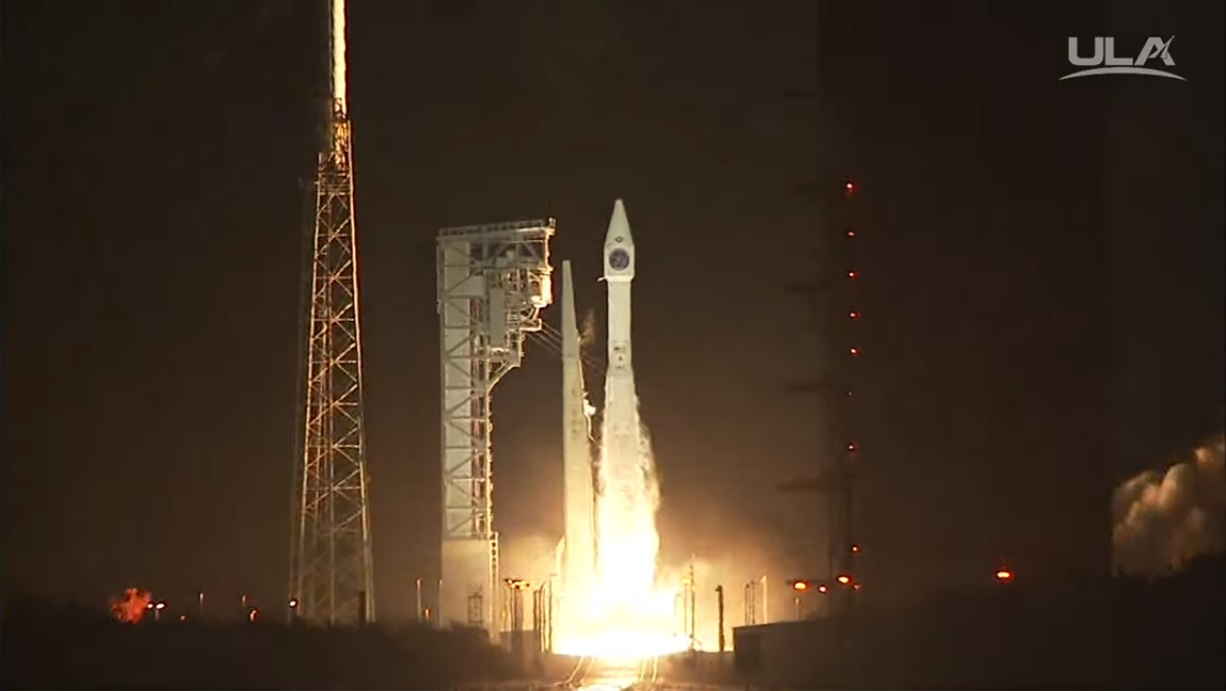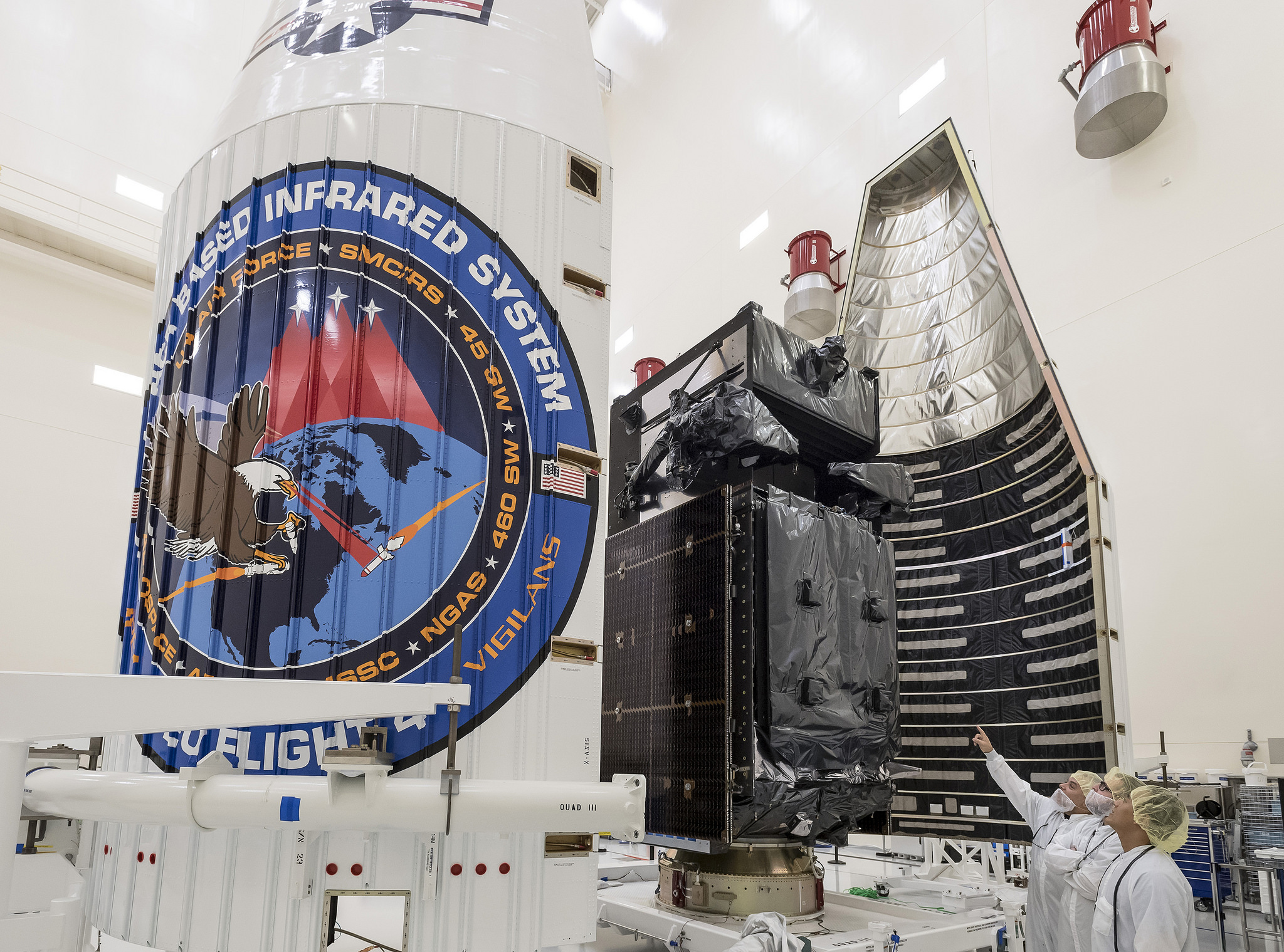Atlas V Rocket Launches New Missile-Warning Satellite for US Air Force
The U.S. Air Force has a new missile-tracking sentinel in orbit.
A United Launch Alliance Atlas V rocket launched the new missile-warning satellite Friday night (Jan. 19) from Cape Canaveral Air Force Station in Florida. Liftoff occurred at 7:48 p.m. EDT (0048 GMT on Jan. 20) after a one-day delay so engineers could address a ground-based issue associated with the rocket's liquid-oxygen system.
The Atlas V booster and its Centaur upper stage lit up the Florida night sky to launch the new military satellite mission, called the Space Based Infrared System (SBIRS) GEO Flight 4, from Space Launch Complex 41 at Cape Canaveral. SBIRS GEO Flight 4 is the fourth in a series of Air Force missile-detection satellites designed to use advanced scanners and infrared detectors to track launches of ballistic missiles.

About 42 minutes after liftoff, the satellite is expected to reach an initial orbit that ranges from 100 miles (161 kilometers) at its closest point to Earth to 19,358 miles (31,154 km) at its farthest point, according to a ULA mission description. The satellite will eventually move into a geosynchronous orbit 22,236 miles (35,786 km) above Earth, allowing it to keep watch over the same region of the planet.
The $1.2 billion SBIRS GEO Flight 4 satellite follows the January 2017 launch of its predecessor, SBIRS GEO Flight 3. Two earlier satellites, SBIRS GEO Flights 1 and 2, have been operational in orbit since 2013."SBIRS provides our military with timely, reliable and accurate missile warning and infrared surveillance information," Tom McCormick, vice president of Lockheed Martin's Overhead Persistent Infrared systems mission area, said in a Jan. 11 statement.
"We look forward to adding GEO Flight-4's capabilities to the first line of defense in our nation's missile defense strategy," McCormick said in the statement.
Friday night's launch marked the first flight of an Atlas V rocket of 2018 and the second mission of the year for United Launch Alliance, a joint venture between the aerospace companies Boeing and Lockheed Martin. A ULA Delta IV rocket launched the classified NROL-47 spy satellite on Jan. 12.
Get the Space.com Newsletter
Breaking space news, the latest updates on rocket launches, skywatching events and more!

Email Tariq Malik at tmalik@space.com or follow him @tariqjmalik and Google+. Follow us @Spacedotcom, Facebook and Google+. Original article on Space.com.
Join our Space Forums to keep talking space on the latest missions, night sky and more! And if you have a news tip, correction or comment, let us know at: community@space.com.

Tariq is the Editor-in-Chief of Space.com and joined the team in 2001, first as an intern and staff writer, and later as an editor. He covers human spaceflight, exploration and space science, as well as skywatching and entertainment. He became Space.com's Managing Editor in 2009 and Editor-in-Chief in 2019. Before joining Space.com, Tariq was a staff reporter for The Los Angeles Times covering education and city beats in La Habra, Fullerton and Huntington Beach. In October 2022, Tariq received the Harry Kolcum Award for excellence in space reporting from the National Space Club Florida Committee. He is also an Eagle Scout (yes, he has the Space Exploration merit badge) and went to Space Camp four times as a kid and a fifth time as an adult. He has journalism degrees from the University of Southern California and New York University. You can find Tariq at Space.com and as the co-host to the This Week In Space podcast with space historian Rod Pyle on the TWiT network. To see his latest project, you can follow Tariq on Twitter @tariqjmalik.
